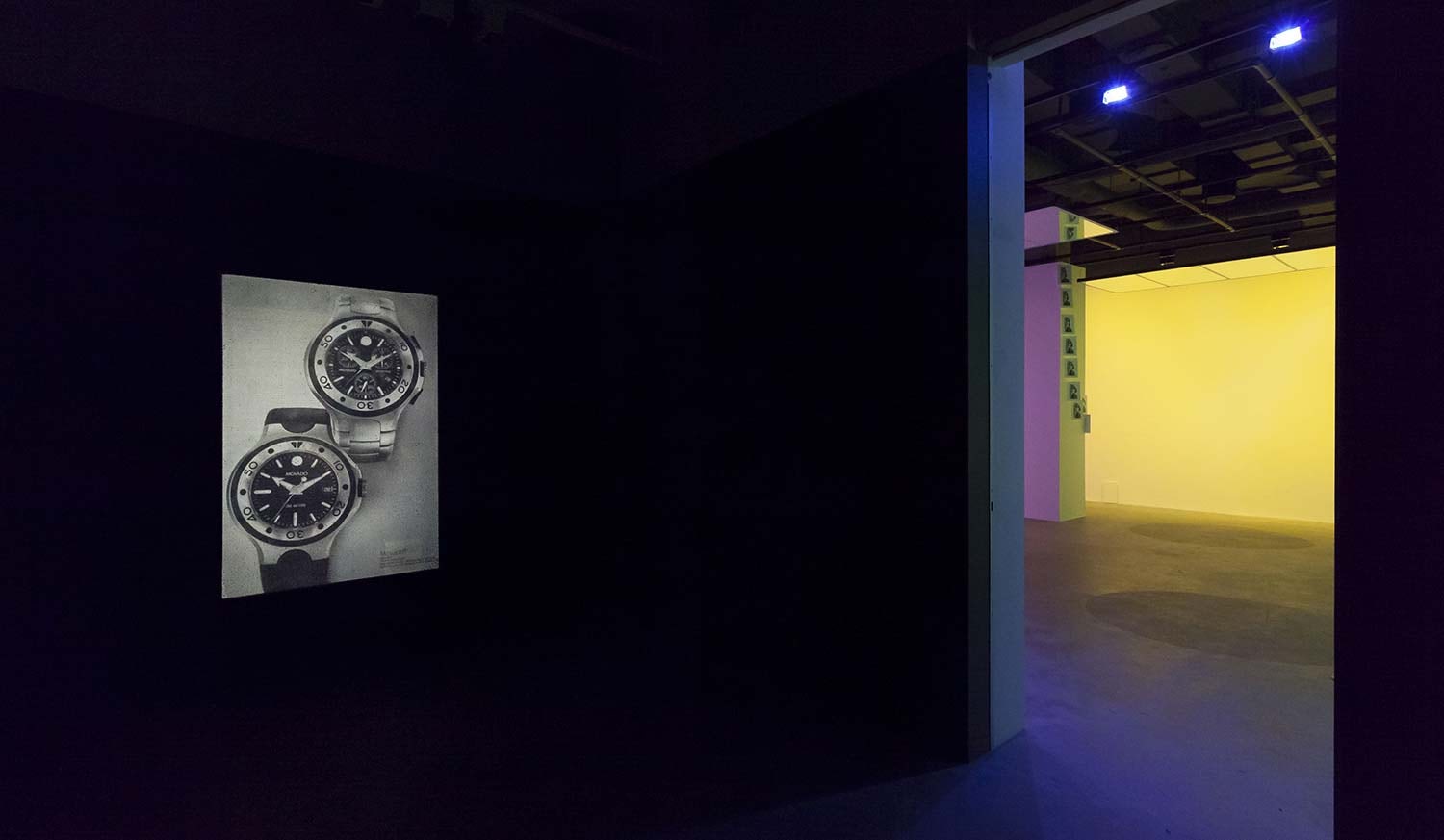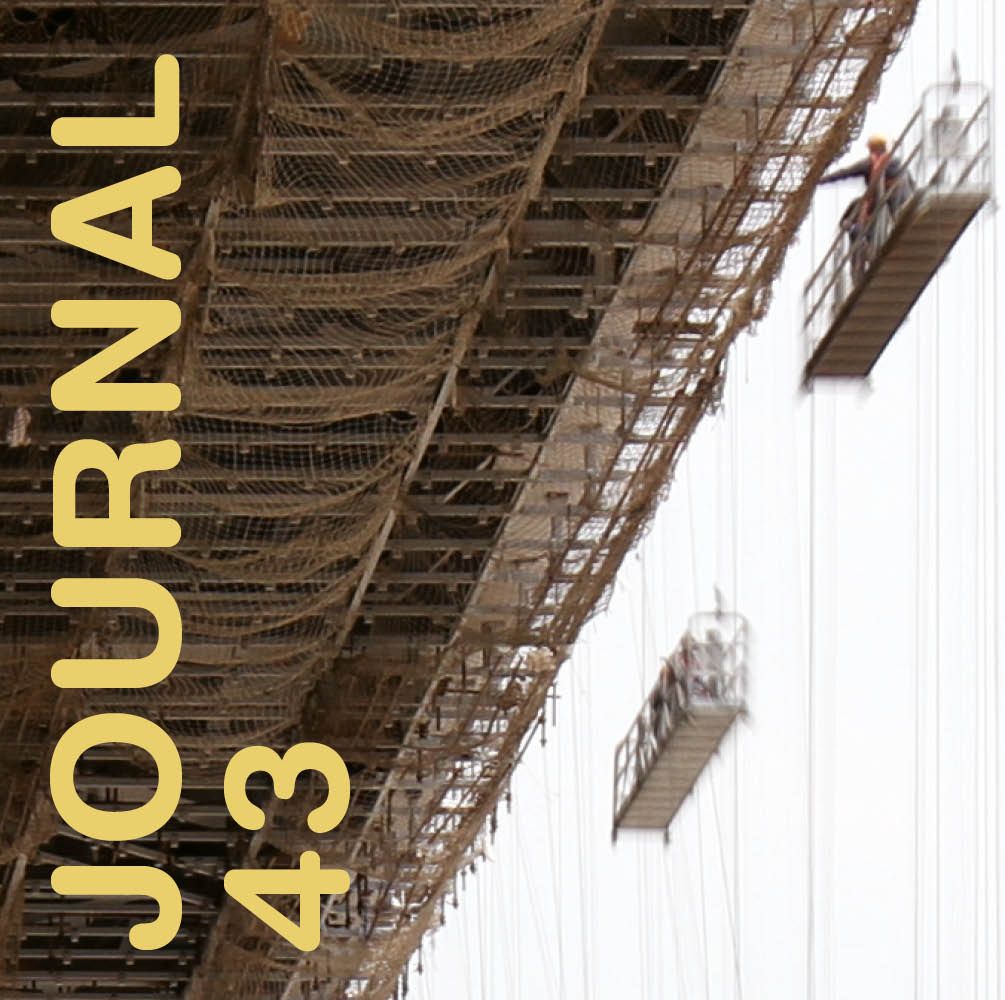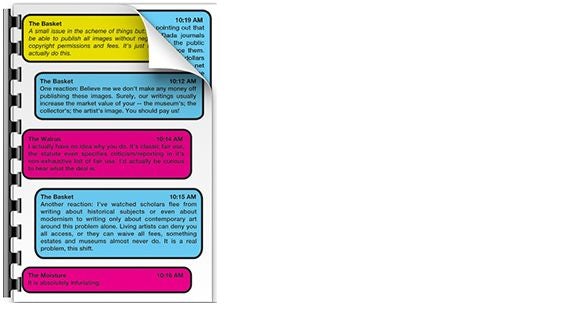
Jon Knowles
Works with Photography
2013.11.02 - 12.21
MICHAEL EDDY
Jon Knowles’ processual work often sources its operations from the traditions of conceptual and appropriation art. Its premises, however, arise in the indirect instruction of a site’s detail, the anecdotal echo licensed to veer on its way, the subjective qualities of making. While his work tends to reference significant portions of recent art history genres, from colour field painting and minimalism through to institutional critique, instead of remaking these aesthetics either to obviously subvert or suggestively cement his position in relation to theirs, it cuts a path through their static meanings by undergoing them as practices. This is in part because of Knowles’ consciousness that history keeps changing—if we can still call it history—along with our means to access it. With incredibly thin delay, images are digitized and fused with experience. With the rise of network culture, history and its documents are picked up with ever higher turnover, exhausting attention in bursts and anticipating later revisitations. Documentation images assume a hugely inflated role in objects’ participation in this social club called contemporary history; but this also means images tend to float through the cultural ether, waiting for the proper moment to condense and descend.
Literally hanging above, the drop ceiling composed of mirrored tiles entitled Working with Photography (Drop Ceiling), is a reference to VOX’s history. Mirrors have by turns featured as among the most symbolically overloaded artistic images (surrealism) or as that most literal of materials (minimalism); here, the mirror returns in the form of document. VOX’s previous location was an arcade adjacent a peep show, the mirrors being the sole elements the gallery retained from this amusements zone. As such, bringing them back functions as a reminder of the transformations the artist-run centre has gone through in its ascent to the present location in the purpose-built “2-22” building in the Quartier des spectacles. Beneath these re-installed mirrors, our thoughts are escorted further back to the arcade itself and its environs, and a feedback system linking these various genealogies converges in the exhibition. Walking into the gallery, the mostly vacant floor space is tinted with a variety of coloured lights, scattering the room with a gradation of affects. A viewer might wonder whether the gallery is prepared for some theatrical action; but then spying their own figures in the looking glass, a type of performance will already be in progress. Privy to the backstory of these mirrors, the viewer might find themselves cast into the ambivalent correspondences between consumer and consumed that characterize this feedback system.

The performance element of the exhibition effectively animates these latent dynamics. For Working with Photography (The Professionals) Knowles has proposed to hire professional documentation photographers to simultaneously document this mirrored ceiling, leaving them to their fancies about the specific approach. The uncertainty around how to picture the mirrors results on the one hand in a heightened sense of authorship on the parts of the documentation photographers. On the other hand, the uncertainty caused by the super-abundance of photographers and the various needs they feel to interact with one another make us aware that they are now faced with the flip-side of their usual task: to recognize their presence in beholding the object, and their own objecthood. As a result, they perform double-time, as documenter and as documenter performing documenter; the photographers’ tango resonates with the gyrations of the exotic dancers in another place and time, dizzyingly displaced by shifts in economics, culture and history itself. To perform as one’s job description already pushes one’s body into a situation of doubling, producing an acute situation of self-reflective professionalism.1 However, being absorbed into the image, while producing new images, refracts the scene into a play of simulations and collusions. These images will eventuate in a series for the exhibition’s accompanying publication, in the end fulfilling their destiny as documentation.
Insofar as Knowles is playing with the professional conventions of image-making, we witness how the complicity of time and value formation is a motif running through all the works in the show. Money converts flows of unperceived duration into inorganic measurements, resulting in accumulations of distinct, unitary fragments. In a side space, a slideshow entitled New York Times is on a loop that promptly advances its carousel to a new slide every second. But the slides, rephotographed images from luxury watch advertisements, project what seems an endless repetition of the same moment in time: roughly 10 minutes after 10 o’clock. The reasons for this tacit standard of the advertising industry bear curiosity2, but the larger issue is the more general aestheticization of time’s conversion into the cold hatch marks on a luxury watch’s surface and how they find their analogues in our experience. Another work in the show, entitled Worked with Photography (Timeline) is a modest interruption in an endless flow of image production. Knowles bought a trailer reel of a mediocre Hollywood picture, Timeline (2003), online for $9. The plot line centres on a group of archaeology classmates who travel back to 17th-century France to rescue their professor—stimulating hijinks ensue, no doubt, but Knowles’ point lies elsewhere than in an exegesis of an average movie. Indeed, it is the very canned quality of time travel as a genre that makes Timeline’s arbitrariness somewhat precise. Here, extracting frames again into slide format from the slickly produced teaser renders the invested spectacle of motion pictures (even uninspired ones) into a stuttering, unsensual delay.
The exhibition Works with Photography comes together as an ensemble of positions that examine and deconstruct the conversion points where photographic work departs from the valuations of art, and then slips back in through unstable windows of time.
1 Performance is one of those curious kinds of labour where production and display occur simultaneously; some might even claim that performativity is the essence of labour in a post-Fordist, consumer society; Paolo Virno comes close to this in his discussions of virtuosity: “It is enough to say, for now, that contemporary production becomes ‘virtuosic’ (and thus political) precisely because it includes within itself linguistic experience as such. If this is so, the matrix of post-Fordism can be found in the industrial sectors in which there is ‘production of communication by means of communication’; hence, in the culture industry.”_A Grammar of the Multitude_ (Los Angeles / New York: Semiotext(e), 2004), p. 56.2 10:10 was apparently settled upon to accommodate the logos and features placed at cardinal points, but a quick search online digs up no shortage of esoteric and personifying interpretations: references to dates of political and historic importance, symmetry, resemblance to the upward angle of a smile (and inversely, at undesirable 8:20, to the downward arc of a frown), hands raised in V for victory, evoking open legs, etc. How time becomes woven with the human figure is certainly an interesting twist, but can’t be pursued here.
